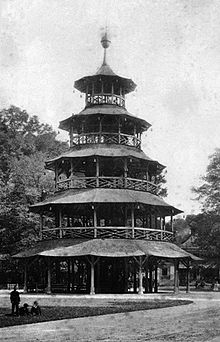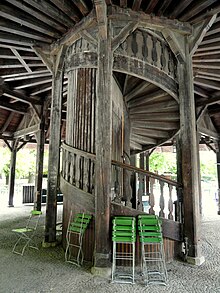
Munich is the capital and most populous city of the Free State of Bavaria. With a population of 1,578,132 inhabitants as of 31 May 2022, it is the third-largest city in Germany, after Berlin and Hamburg, and thus the largest which does not constitute its own state, as well as the 11th-largest city in the European Union. The city's metropolitan region is home to about six million people.

The Englischer Garten is a large public park in the centre of Munich, Bavaria, stretching from the city centre to the northeastern city limits. It was created in 1789 by Sir Benjamin Thompson (1753–1814), later Count Rumford, for Prince Charles Theodore, Elector of Bavaria. Thompson's successors, Reinhard von Werneck (1757–1842) and Friedrich Ludwig von Sckell (1750–1823), advisers on the project from its beginning, both extended and improved the park.

The Eisbach is a 2-kilometre-long (1.2 mi) man-made river in Munich. It flows through the Englischer Garten park, and is a side arm of the Isar River. An artificial wave has been created on one section, which is popular among river surfers.

The Munich tramway is the tramway network for the city of Munich in Germany. Today it is operated by the municipally owned Münchner Verkehrsgesellschaft and is known officially and colloquially as the Tram. Previous operators have included Société Anonyme des Tramways de Munich, the Münchner Trambahn-Aktiengesellschaft, the Städtische Straßenbahnen and the Straßenbahn München.
International Garden Expo 83 was a garden festival containing 170 exhibition contributors. The international horticultural exposition was recognised by the Bureau International des Expositions (BIE) and held from April 28 to October 9, 1983, at Westpark in Munich, Germany. Ralph Siegel wrote the Flower Serenade as official song of the exhibition; it was recorded by Hugo Strasser and his orchestra. The German Federal Post Office issued a special stamp with a stylized flower.

There are a series of tents at the Oktoberfest, which are operated by different Wiesn-hosts and in which some come from a long tradition. Some tents belong to the local breweries. The setup work for the tents often begins three months before the start of the festival.

The Seven is a real estate project in the Munich Gärtnerplatz district, City area Ludwigsvorstadt-Isarvorstadt. In a former heating plant of the city of Munich, luxury properties were built.

The Mandlstraße is a street in Munich's Schwabing district. It runs west of the Englischer Garten from the corner of Maria-Josepha-Straße / Königinstraße to the corner of Gunezrainerstraße / Biedersteiner Straße and forms the eastern edge of the protected building complex Alt-Schwabing. The street was named after Johann Freiherr von Mandl-Deutenhofer, chancellor and president of the court chamber in the service of the Bavarian elector Ferdinand Maria.
The Feilitzschstraße is a roughly 450-meter-long street in Munich's Schwabing district. After the incorporation of Schwabing to Munich in 1891, it was renamed after the Bavarian State Interior Minister, Maximilian von Feilitzsch (1834–1913) in order to avoid confusion with the Maffeistraße in the old town.
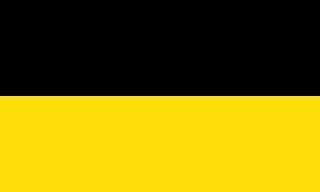
The following outline is provided as an overview of and topical guide to Munich:
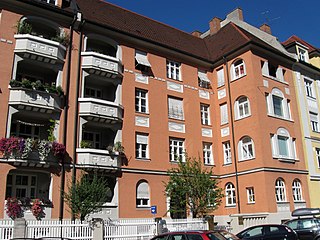
Clemensstraße is a 1.76-kilometer-long street in Munich's Schwabing district. The street, named after Clemens August of Bavaria (1700–1761), labeled under the term Green Axis Schwabing is a participative model project for all Munich municipalities and Munich's longest bicycle road.

Maria-Josepha-Straße is a street in Munich's Schwabing district. It runs west of the Englischer Garten from Dillisstraße, or the Nikolaiplatz to the corner of Mandlstraße/Königinstraße, and forms the southern edge of the heritage-protected building ensemble Alt-Schwabing. The name of the street came from Maria Josepha of Portugal, the second wife of Karl Theodor, Duke in Bavaria. The renaming of the street from its originally name, Wiesenstraße, took place in the course of 1891 and was carried out with the incorporation of Schwabing to Munich. Countless streets of the Altschwabinger village center were then given new addresses and names. According to Rambaldi, the street name assignments were officially carried out as early as 1890, and for the postal detection of the buildings along this road, the name had been recognized since 12 November 1892. On city maps from the years 1890 and 1891, the street name was not yet to be found.

The Martiusstraße in Munich Schwabing leads from Leopoldstraße to Kißkaltplatz. It was named after naturalist Carl Friedrich Philipp von Martius. He was director of the Alter Botanischer Garten in Munich and member of the Bavarian Academy of Sciences and Humanities.

The Königinstraße is a street in Munich. It runs west of the Englischer Garten from the Von-der-Tann-Straße in the district of Maxvorstadt, to the north and to the Maria-Josepha-Straße and Mandlstraße in the Ensemble Alt-Schwabing.

The Isarring is a four-lane section of the Mittlerer Ring, the Bundesstraße 2 R, in Munich. It is used by 110,000 cars every day and was constructed in 1966.

SAP Garden is a planned 12,500-seat indoor arena, to be built in Olympiapark, Munich. It will not be completed until spring 2024 at the earliest. The site will be built at the location of the former Radstadion which was demolished in 2015. It will become the home rink to ice hockey team EHC Red Bull Munich and home court to basketball team Bayern Munich.

Leonrodplatz is a square in the Munich district of Neuhausen. It was named in 1927 after the former Bavarian Minister of Justice Leopold von Leonrod.

Joachim Kaiser was a German music, literature and theatre critic and senior editor in the feuilleton of the Süddeutsche Zeitung. Starting 1977 to 1996 he held a seat as a professor of history of music at the State University of Music and Performing Arts Stuttgart.
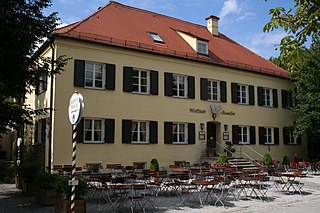
Aumeister is a pub and beer garden in Munich, Germany, with 2500 guest places. It is located at the northern end of the Englischer Garten in the meadow south of the Föhringer Ring and east of the Studentenstadt area in the Kulturheim neighbourhood of the Freimann district.
The East-West Peace Church, also known as the Church of Father Timofej, was a chapel in the Olympiapark in Munich.

